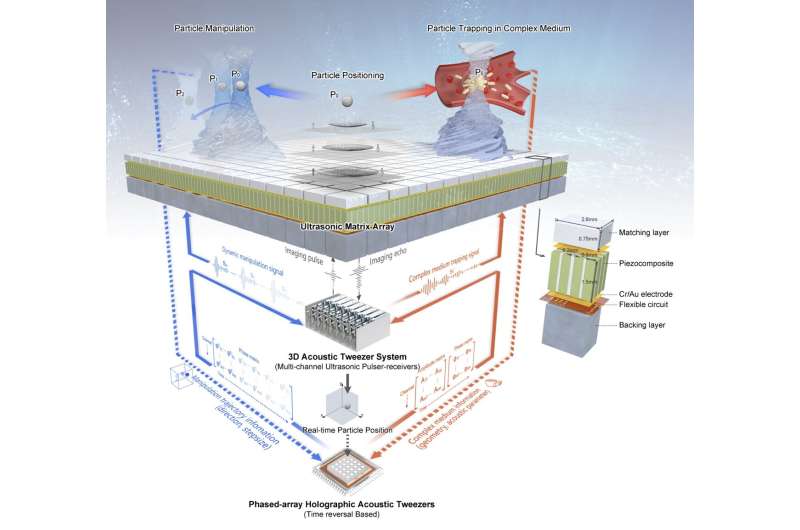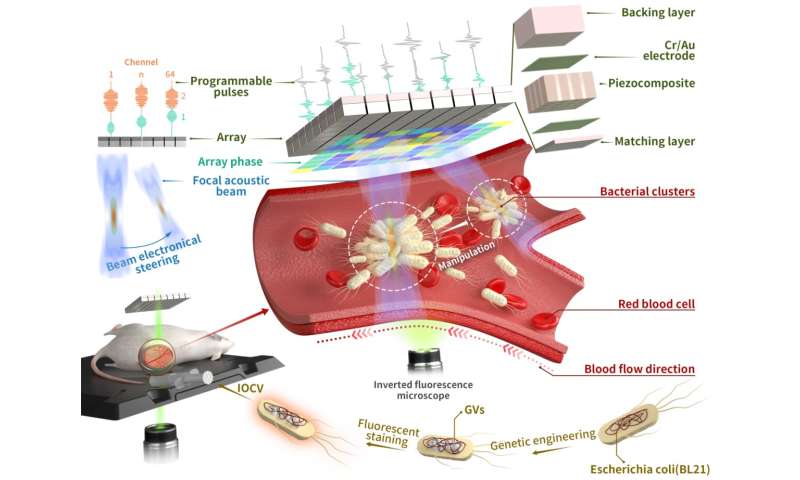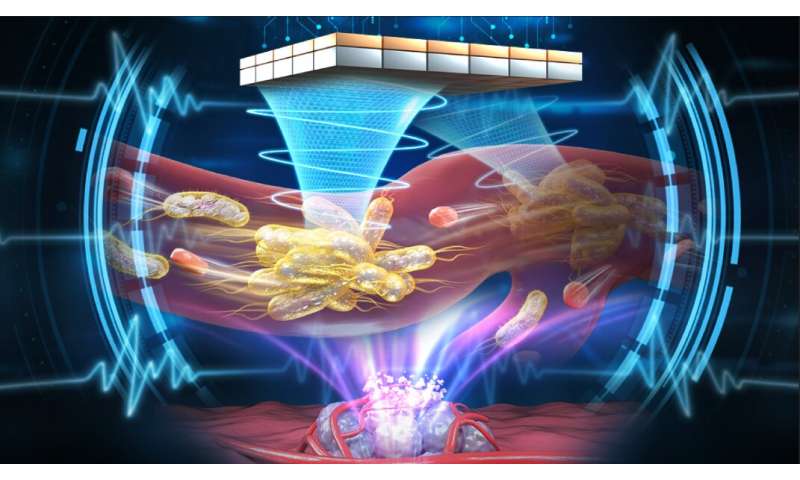This article has been reviewed according to Science X's editorial process and policies. Editors have highlighted the following attributes while ensuring the content's credibility:
fact-checked
peer-reviewed publication
trusted source
proofread
Scientists develop new technology for targeted cancer therapy

Acoustic tweezers can control target movement through the interaction of momentum between an acoustic wave and an object. Due to their high tissue penetrability and strong acoustic radiation force, such tweezers overcome the limitations of optical and magnetic tweezers, thus making them suitable for in vivo cell manipulation.
A research team led by Prof. Zheng Hairong from the Shenzhen Institute of Advanced Technology (SIAT) of the Chinese Academy of Sciences (CAS) has recently developed a new type of acoustic tweezers—the phased-array holographic acoustic tweezers (PAHAT) system—which is based on a high-density planar array transducer capable of generating tunable three-dimensional bulk acoustic waves. The researchers hope this system can realize a pharmacological version of "telekinesis." The study was published in Nature Communications on June 6.
The in vivo environment is extremely complex, due to the different characteristics of various tissues, organs, bones, blood vessels, and blood flow. Such a complex environment creates a huge challenge: How can acoustic methods be used to "trap" bacteria so they can produce therapeutic effects on tumors?
The team investigated dynamic target manipulation in complex environments using holographic acoustic fields. They subsequently developed a high-density ultrasound transducer array, which made it possible to generate a strong gradient acoustic field and exert precise spatiotemporal control.
-

Setup diagram for in vivo manipulation of cells using PAHAT. Credit: SIAT\ -

Schematic diagram of in vivo manipulation of cells using PAHAT. Credit: SIAT
The researchers then used gene editing to create sub-micrometer gas vesicles in bacterial cells, enhancing their acoustic sensitivity. These genetically-engineered bacteria formed clusters under the influence of the radiation force in the acoustic field. By combining microscopic imaging with PAHAT, the researchers were able to achieve precise manipulation of bacterial clusters in live mice, thus demonstrating a promising approach for targeted drug delivery and cellular therapy in cancer treatment.
Prof. Ma Teng, co-corresponding author of the study, said that the researchers could "precisely control bacteria to reach the lesion according to the predetermined path," while Prof. Yan Fei, co-corresponding author of the study, said that the manipulation technology improved cluster aggregation within tumors, thus effectively slowing tumor growth.
According to Prof. Zheng, "PAHAT enables precise non-contact manipulation of cells in living organisms. Combining with functional cells and cell spheroids, it has great potential in immunotherapy, tissue engineering, targeted drug delivery, and other fields."
More information: Ye Yang et al, In-vivo programmable acoustic manipulation of genetically engineered bacteria, Nature Communications (2023). DOI: 10.1038/s41467-023-38814-w


















